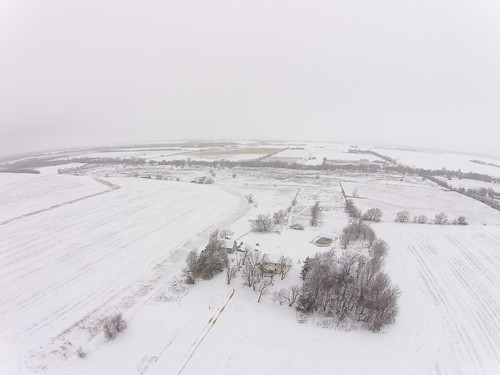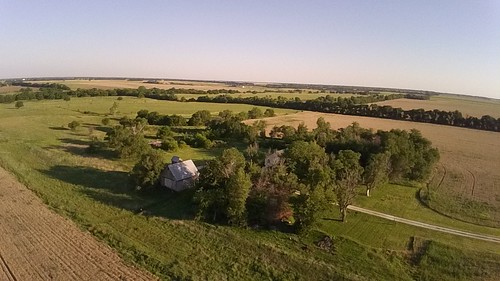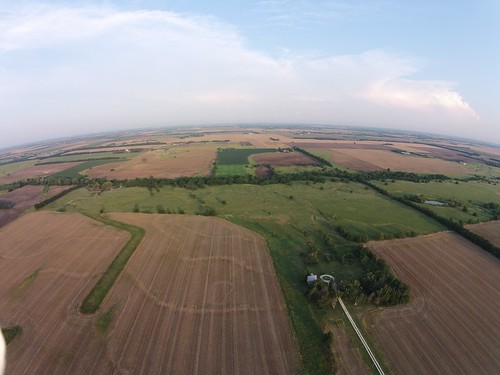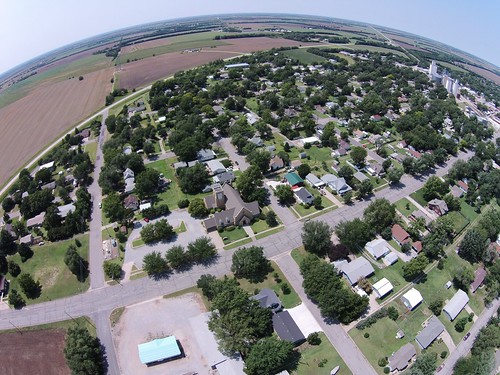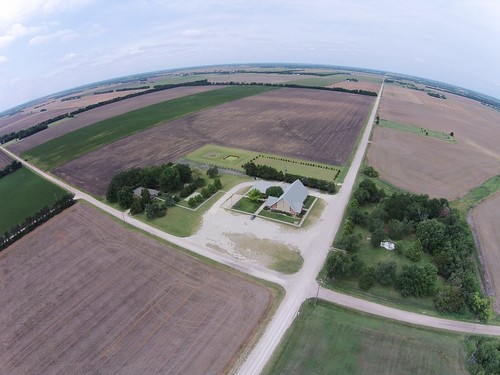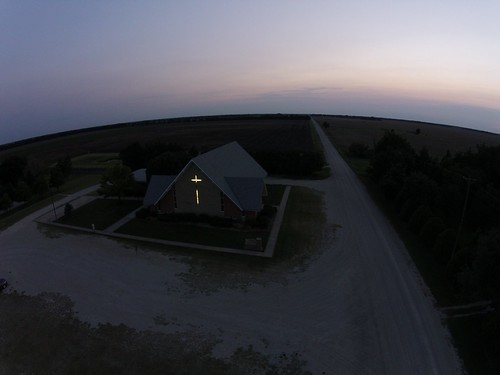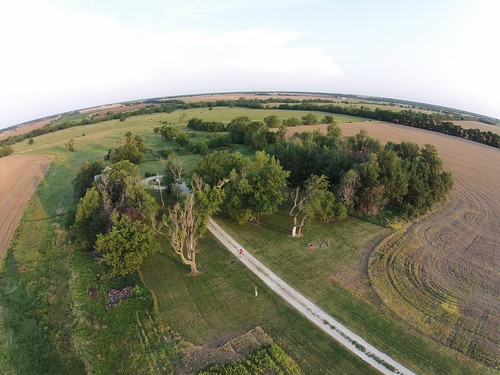I’ve owned two different GPSs in the past: a Garmin GPS III, and the Garmin eMap. Both are based on similar underlying firmware.
This week, I did some research on more modern GPS units and decided to buy a Garmin nuvi 500. Here’s my review.
Overview
The Garmin nuvi 500 is one of only two models in the nuvi line that are waterproof. The nuvi 500 and 550 are both designed as hybrid units: useful both in the car and outdoors. The 500 includes street-level maps (they appear to be the same quality as Google) for the entire United States, detailed topographical maps for the entire United States, and a global basemap. It also includes a microSD slot (or is it miniSD – I forget) for additional maps that you can buy — anything from marine maps to other countries.
It also includes a default POI (points of interest) database containing over 5 million points: restaurants, gas stations, parks, hospitals, you name it. Most contain an address and a phone number in additional to the coordinates. Unlike GPS units that you find built in to some cell phones, this is all stored on flash memory on the unit: no Internet connection required. The nuvi 500 is a portable yellow pages, topographical map, and incredibly detailed street atlas all in one.
Car Use
The nuvi 500 comes with a car charger and suction cup windshield mount in the box. (It doesn’t come with an AC charger, but it can charge over USB.) It also comes with — yay — a user-replaceable battery. The windshield mount is very sturdy and I am happy to have one that isn’t permanent.
In the car, the device performs admirably. I have read some other reviewers that have compared its routing to other GPSs and found that the nuvi generally picks the same route as Google, and almost always a better route than other GPSs. If you deviate from the selected route, it automatically re-calculates a new route for you. It will show you the next turn coming up, and has either 3D or flat map displays.
There’s a one-touch “where am I” feature. It displays your current coordinates, some sort of street address suitable to read to someone (“1234 S. Main” or “I-95 exit 43” type of thing), along with buttons to show you the nearest police stations and hospitals.
The unit also features multi-stop routing. You can either tell it where all you’re going in a defined order, or tell it all your stops and let it create an optimal route. This feature works, but it your stops are close by (and involve some of the same roads), it may wind up skipping some stops thinking you’ve made your first one.
The speaker announces upcoming maneuvers, though it doesn’t have a synthesizer for street names. It’s also supposed to work with Bluetooth headsets, though I haven’t tested that feature.
I found the map quality to be excellent. It seems to be on par with Google (in fact, I think both use data from Navteq). I was surprised with how many country dirt roads and side roads it knows about — and of course, regular city streets are all on there, with one-way indications and the whole lot. In fact, the quality of coverage was so good that I was surprised when it missed roads or got things wrong. Out in rural areas, or small towns, this happens from time to time: it thought that an abandoned railbed was an unnamed road and wanted me to drive on it (it was clearly not drivable), and in some other cases also thought some abandoned roads were still drivable. I don’t think this is a device issue though; it’s an underlying data issue, and everyone else probably has the same problem.
Its arrival time estimates are quite accurate, and its interface is smooth and easy.
It has some optional accessories I haven’t tried, such as real-time traffic reports from wireless sources, boating mode, etc.
Outdoor and Geocaching Mode
Our other main use for the device is outdoor hiking and geocaching. It really shines here. It has special support for the GPX files from geocaching.com. The device supports “paperless caching”. Not only can it put caches on the map, but if you download the GPX file for your caches, you’ll also get the full description, hint (behind a separate button, of course), most recent 5 logs, and the like right there on your screen. You can also log your finds on the device, and upload a file from it to geocaching.com later to log them on the site. This is an incredible time saver over my old method: printing out a bunch of maps, downloading waypoints to the eMap, taking notes, then logging things later.
I found outdoor mode not quite as refined as the auto mode, however. It kept forgetting that I wanted to use an arrow as my current position indicator (the default hiking boots for walking mode didn’t provide an accurate enough direction indication for my tastes). Finally realized that saying “don’t ask me about the configuration” was the key to getting it to remember the configuration. It sometimes took a surprisingly long time to realize we weren’t standing still any longer.
On the other hand, the quality of the GPS receiver was amazing. It even got a strong signal in my house. And I wasn’t even sitting at a window. The topographical maps are a nice addition, and the breadcrumb mode is always helpful when geocaching and hiking, too.
My natural way of holding it meant that I accidentally turned it off a few times, because I had a finger holding it right over the power button. But it powers back up and re-obtains the signal quite rapidly.
The different modes (automobile, outdoor, bicycle, and scooter) are mainly different collections of settings: 3D map or flat, what indicator to use, to navigate off-road or along roadways, to ignore one-way indications or heed them, etc.
PC link
The nuvi 500 has a USB port. Plug it into the PC, and you see its internal flash drive, vfat formatted. You can upload and download GPX files there, store photos if you like. Be careful what you mess with though, because its built-in maps and system data are also on that drive. If you have the SD card inserted, that will also be presented to your computer when you plug the device in. Garmin has some Windows software to make it easier to upload/download stuff, but I haven’t tried it.
Annoyances
As you can tell, I really like this GPS, but there are a few things about it that annoy me.
The #1 thing that annoys me isn’t actually the GPS itself, but Garmin’s website. I went to register the device online, but it wouldn’t let me because I don’t have the Windows-only browser plugin on my Linux machine, and it wanted to talk to the GPS for some reason. I went to send them a support request about that, only to discover — after I had typed in the request — that their “email us” form is broken in Firefox on all platforms. Bad show, Garmin.
The on-screen keyboard (it’s a touch-screen device with only one hard button for power) isn’t QWERTY layout; it’s alphabetical layout, and it makes me inefficient when entering data. I found myself logging my finds on the unit, but taking notes about them on paper because that was faster. Garmin has a feature listed on their website for a toggle between QWERTY and alphabetical layout, which they apparently offer on only their more expensive GPSs. What? There is no reason to not but that in all your firmware.
The device lacks a few features I was used to on my GPS III and eMap. It doesn’t support any kind of real-time position indication to the PC; all communications is just accessing stored data on the internal flash drive. I used to think that was a nice feature, but in reality, I haven’t used it in years. It also lacks the display of the exact location of each GPS satellite, though the incredible quality of its receiver means that I don’t really care any more. (I used to use that information to help figure out which window to put it by if in a car/train or something.)
It also lacks the level of configuration that was present in the settings screens on the older units. There’s no “battery saver” mode (sample every 5 seconds when going at a constant velocity instead of every 1) like the older units had. The sun and moon screen likewise is gone, but added is awareness of timezones; the Nuvi 500 can show you the local time at your present position synced up with the GPS satellites.
The compass is not the most helpful screen, though after some practice, it is functional. The documentation about it is confusing, but really the thing that was more confusing was this: in walking mode, the arrow that indicates what direction you’re walking in updates faster than the arrow that indicates what direction you should be walking in. Once I realized what was going on there, it was easier to use.
The compass does tell you what your bearing is, in degrees, but only when you are not seeking a destination. It will not tell you the bearing to the destination, though you can estimate it from the simulated compass face on the display. When seeking a specific point, especially through terrain with obstacles such as trees, it is useful to be able to use a compass for the final approach because a GPS unit can’t tell you which direction it’s pointed — only which direction it’s moving, so when you’re not moving or moving slowly, it’s not helpful.
I did some experimentation today with the compass screen, as well as my real compass, and was able to navigate to my destination rather precisely using the combination of them. That said, a more functional compass screen would still be better.
Conclusion
Overall, I’m very happy with the nuvi 500. It’s not the same as a top-of-the-line device in either the outdoor or automotive category, but on the other hand, it’s cheaper and more convenient than buying two devices with similar features. The geocaching features are excellent, the build quality is excellent as well. The system is stable and performs well. (Some other reviews worried about whether the case is solid enough; it seems quite solid to me.) I wish there were a faster way to toggle between 3D and flat map views, and forgetting about my walking mode icon is annoying, but other than that I have very little to complain about. Garmin’s geocaching features (found on this unit and several other in their lineup) is great.

